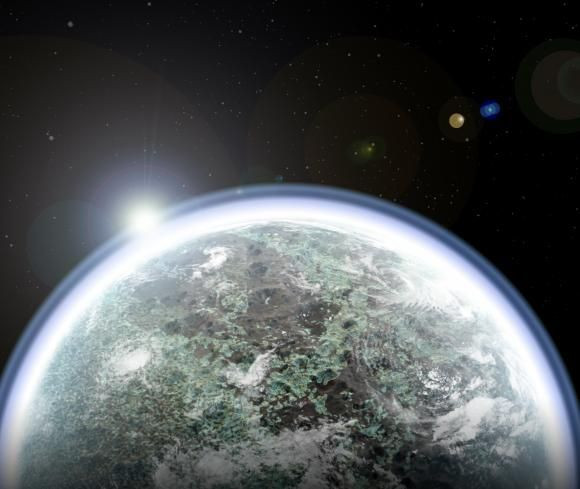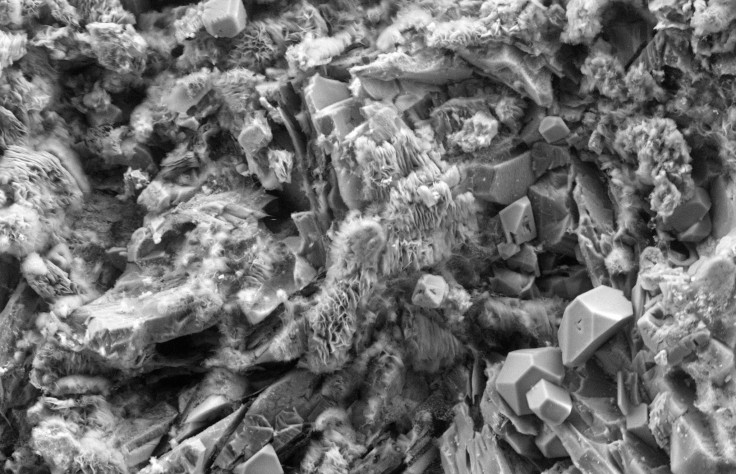Mars’ Ancient Clay Deposits Could Have Formed With Martian Crust, Without Water

Instead of water, an atmosphere dense with steam or one that was supercritical could have allowed for the formation of clay on the surface of Mars, according to research published Wednesday. The preponderance of clay on the Martian surface has often been associated with the presence of water on it too, even if it was billions of years ago.
There is a lot of clay on the surface of our neighboring planet, and its distribution is widespread but patchy. It is usually found as ancient outcroppings of phyllosilicates that number in thousands on the red planet, and its association with flowing water is explained by how clay is usually formed. It takes three ingredients — rock, heat, and water. Most commonly, clay forms when water comes into contact with the volcanic rock.
But new research by Kevin Cannon — who finished his Ph.D. at Brown University in Providence, Rhode Island — and his coauthors suggest the clay dates back to a time before the water ever existed on Mars. In fact, the clay was formed at the same time the planet’s crust was forming, they suggested in the paper. Their theory goes something like this.
Like other rocky or terrestrial planets of the solar system, Mars is thought to have been covered in a global ocean of magma, or molten rock. As it began to cool down and turn solid, dissolved volatiles including water was probably ejected, and they formed a thick atmosphere around the planet. This dense layer of steam, with its moisture and high pressure, could have converted large portions of the new solid surface into the clay. As time passed, bombardment by asteroids and volcanic activity would lead to covering the clay in some places and exposing it to others.
“This primordial atmosphere created by a magma ocean would have been the hottest and wettest Mars ever was. It’s a situation where you could pervasively alter the crust and then just shuffle those materials around afterward,” Cannon said in a statement Wednesday.
Climate models for Mars suggest that early in the planet’s history, temperatures didn’t often climb above the point of freezing, and consequently, the flow of water on the surface was not commonplace or constant.
Jack Mustard, a professor at Brown and a co-author of the study, said in the statement: “We’re certainly not trying to discount other alteration mechanisms entirely. Surface weathering and other types of alteration surely occurred at different points in Martian history, but we think this is a plausible way to explain much of the widespread clay we see in the oldest Martian terrains.”
To make their point, though, the researchers synthesized rocks similar in composition to Martian basalt and exposed them, for a period of two weeks, to temperature and pressure conditions thought to exist in the steamy atmosphere created due to a magma ocean.
“It was really remarkable how quickly and extensively this basalt was altered,” Cannon said. “At the highest temperatures and pressures, it ate completely through the basalt particles. It’s a really intense degree of alteration.”

Given a period of 10 million years, the timeframe Cannon and his colleagues say the steam atmosphere could have lasted, a layer of clay as much as three kilometers (1.9 miles) deep could have formed on the primordial surface of the red planet.
Stephen Parman, another Brown professor who co-authored the study, said of their theory, “One of the things I like about this is that it’s truly testable. With a returned sample, or maybe even with the analytical equipment on a rover, I’m optimistic that you could distinguish this primordial process from some other alteration process.”
If the theory is right, and clay deposits on Mars formed through the process described in it, those deposits are potentially large underground reservoirs of water. That, in turn, could be potentially very significant for any habitability of the planet, whether past or future.
The paper, titled “Primordial clays on Mars formed beneath a steam or supercritical atmosphere,” appeared online in the journal Nature.
© Copyright IBTimes 2025. All rights reserved.





















